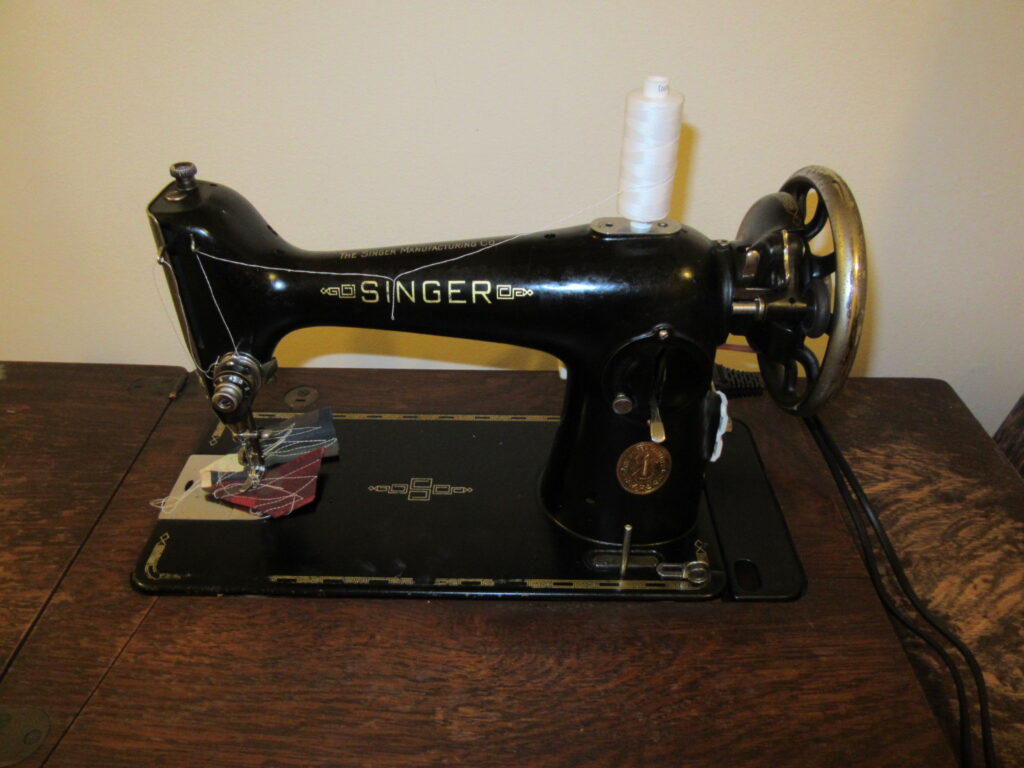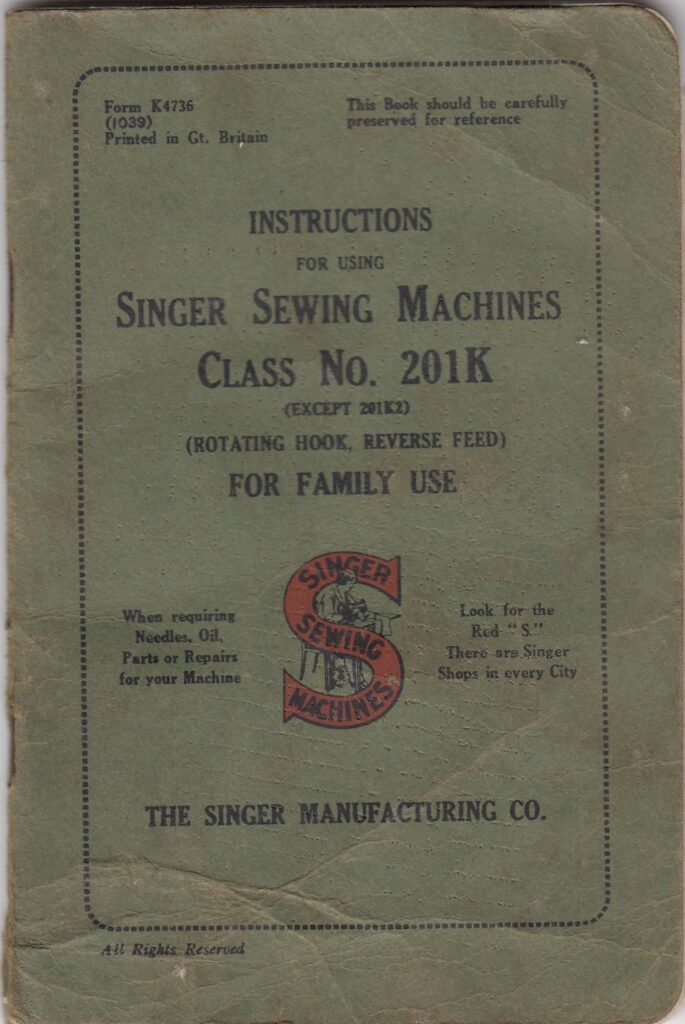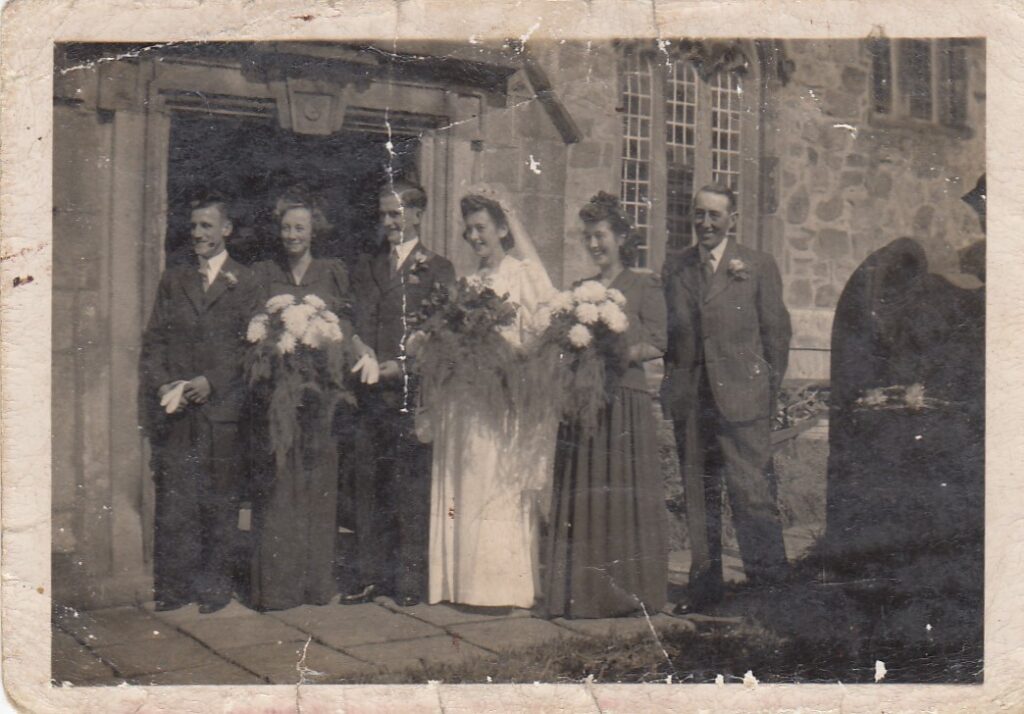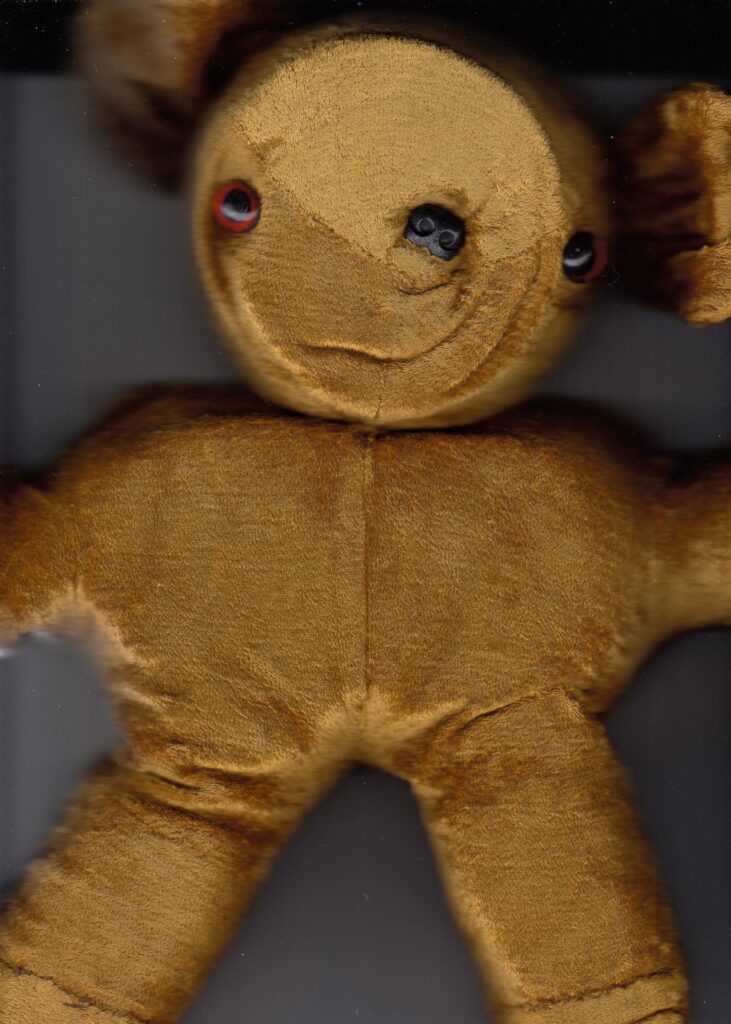
My beautiful Singer sewing machine arrived home on Wednesday after many months in the repair shop and, with this week’s #52ancestors theme being “working”, there’s really only one story to write. This is the story Mary Booth (aka Nana, my mother’s mother) or more specifically Mary’s working life as a dressmaker.
Mary was just fourteen when she started work as an assistant at a ladies’ outfitters shop at the smart address of The Grove, Ilkley. Each day she would jump on her bike and cycle the four miles each way from her home in Askwith. Each day her sewing skills developed.
It was her father, Arthur Booth, who had found her this role and it was her father who bought Mary her first sewing machine, a Singer 201K1.

This beautiful treadle machine was first produced in 1935. Top of the range, they were expensive to buy. “Favoured by tailors and professional seamstresses because of the large ‘harp’ space, to accommodate bulky fabric, they could easily cost 6 months wages and so were frequently purchased on credit” and I like to think was a the demonstration of a a father’s love for his female child.
Mary’s skills swiftly progressed, and, with her own machine she was able to take on commissions. Demand grew and by her late teens Mary had left the ladies’ outfitters: she was setting up on her own. In the 1940s people still tended to make their own clothes or commission others to do so. This was particularly the case for people of an unusual size or for special occasions. Mary had customers and a viable business.

On the 7 September 1946, Mary’s older, and only, sister, Hilda Booth, married George “Bud” Nelson. It was eighteen-year-old Mary who made the outfits for bride & bridesmaids right down to the bright red fingerless gloves. Imagine the pressure! Yet, it also made a wonderful advert for Mary’s skills and wedding dresses became a speciality for many decades. Her own wedding in 1948 & her daughter’s (my Mum) in 1973 illustrating the longevity of her career. Family & friends aside (for Mary was a kind and generous person and known to undercharge) dressmaking provided a steady income for many years until arthritis finally became too severe to continue.

Yet what of this wondrous sewing machine? The first Singer 201K was a treadle and these were fast being replaced by those with an electric motor. Recognising the investment, Mary had a motor added and continued to use the same machine until sometime in the late 60s/early 70s when she finally acquired a more modern version with money saved from her dressmaking. The old Singer was relegated to an upstairs bedroom.
It is this newer machine that I remember, sitting in the corner of the main room that served as living & dining space. There was a bin of material scraps by its side, reams of materials underneath and an old chocolate box full of shuttles. It is where I learnt to sew.

I inherited the old Singer machine, I think when Nana & Grandpy finally moved from the farmhouse to a modern bungalow in the 1990s.
I’m ashamed to admit that, for the last twenty years, this wonderful machine has acted as little more than a table for displaying family photos. Then, about three years ago, I bribed a friend, Rachel (with the promise of an afternoon of sewing with gin & tonic) to help me get over my nervousness. We lifted the cover, flipped down the front ledge and pulled the machine from its dusty lair. Rachel, always diplomatic, suggested that twenty years of being under a table had taken a toll and maybe we should stick to gin & tonic. It took me another year to find a repair shop (Tony’s Sewing Centre) who kindly suggested that the electrics were, quite likely, lethal. Fast forward through Covid and finally, the machine that gave my Nana independence is ready to be used again.
With much gratitude to my Mum, who always helps me with these stories, to my friend Rachel, who made me face what needed to be done to get the machine working, to Tony & his wife at Tony’s Sewing Centre in Tufnell Park who brought the Singer back to life, to Amy Johnson Crow whose #52ancestors challenge encouraged me to publish this story and above all to my Nana who we’ll always miss.
